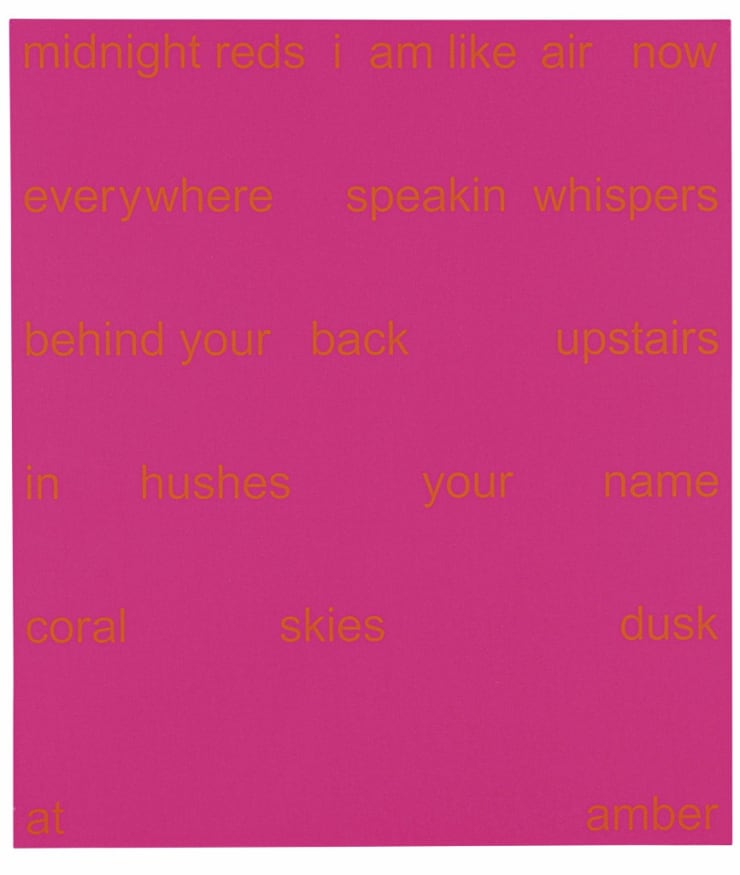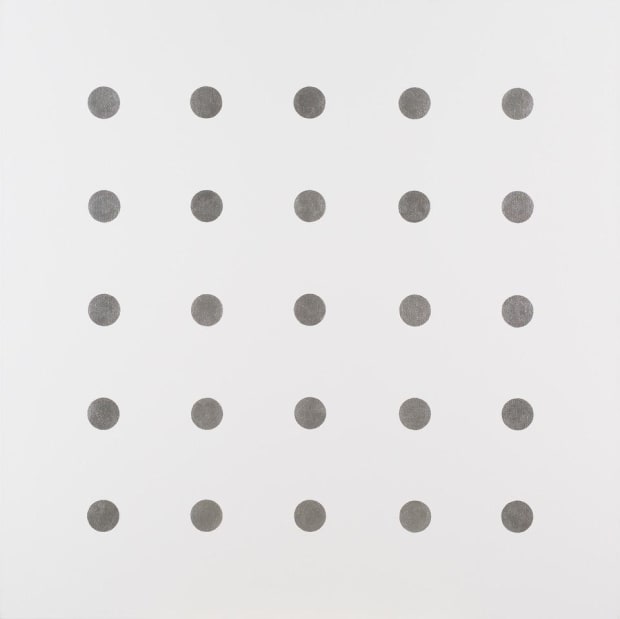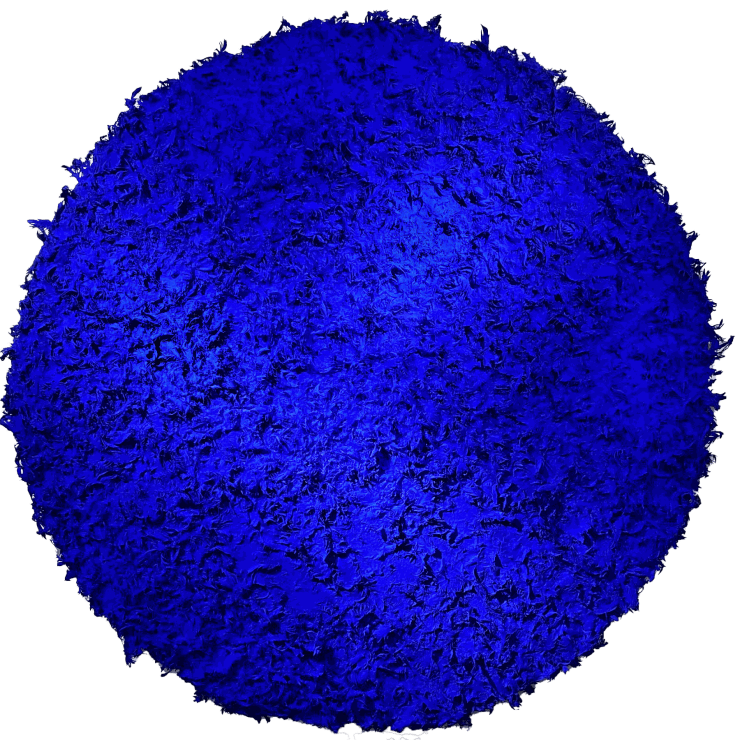Mark Borghi presents a virtual exhibition of works executed from the early 2000s to the present. These selections from contemporary artists represent the range of artistic movements that redefined the meaning of art in the mid-late 20th century—from conceptual mixed media works and sculpture to neo-expressionist drawings and gestural abstractions. Through their diverse processes, each of these artists are unified by an exploration of our modern world in their work, whether that is observed through a societal and historical lens, or through their own identity, relationships and surroundings.
-
-
ANDREW WAPINSKI
-
Andrew Wapinski is a visual artist whose current practice is rooted in the memories of interacting with the environment of the historic coal mining town in which he grew up. His work places great importance on the physicality of material and its relationship to artistic process. Melting blocks of pigmented ice, hand ground anthracite coal and the collection of dust from his reductive painting processes lay the foundation for Wapinski to investigate interwoven themes of liminal space, reclamation and material significance as they relate to shifting environments and sense of place.
-
ADAM PENDLETON
-
Adam Pendleton is known for his work animated by what the artist calls “Black Dada,” a critical articulation of blackness, abstraction, and the avant-garde. Drawing from an archive of language and images, Pendleton makes conceptually rigorous and formally inventive paintings, collages, videos, and installations that insert his work into broader conversations about history and contemporary culture. His work centers on an engagement with language, in both the figurative and literal senses, and the re-contextualization of history through appropriated imagery to establish alternative interpretations of the present and, as the artist has explained, “a future dynamic where new historical narratives and meanings can exist."
-
 John Armleder (b.1948)H Painting, 2005Metallic silver paint and gesso on unprimed cotton duck48 x 48 inches (121.92 x 121.92 cm)
John Armleder (b.1948)H Painting, 2005Metallic silver paint and gesso on unprimed cotton duck48 x 48 inches (121.92 x 121.92 cm) -
DANA LOUISE KIRKPATRICK
-
Dana Louise Kirkpatrick's work is best characterized as a loose and graphic style reminiscent of the 1980s street art movement. Based in California and New York, her work aims to contextualize social, cultural and individual behaviors as they relate to themes such as injustice and violence. Her art is peppered with references to sports, music, pop culture, and sex, as well as specific allusions to other artists, resulting in a synthesis of references that is often darkly humorous. She grapples with the dichotomies and contradictions embedded in contemporary Western culture, religion, and humanity, using forceful iconography and a highly expressive technique. Avoiding sentimentality, the Kirkpatrick seeks to establish an intimate connection with viewers while engaging them with the unrestricted exploration of universal emotions.
-

Clintel Steed (b.1977)
The Snake Charmer with Mayan Mask, 2020
Oil on canvas
84 x 80 inches (213.36 x 203.2 cm)
-
LIZ DOYLE
-
Hailing from a small island off the coast of County Donegal in the North West Ireland, Liz Doyle notes how the horizon is a constant presence in her life. Her works are focused meditations of color and light that challenge what is seen and unseen and how one’s surroundings affect an artist’s vision. The paintings are mostly modest in scale, but Doyle uses bright palettes exploring a range of jewel and earthy hues, not unrelated to where the paintings may lead the viewer in their sense of place. While the work is informed by the artist’s surroundings at her time of making, they emit a sense of water and land,which is perhaps a byproduct of daily visualization of what is on the artist’s mind or in her sight. She relates this imagery in her paintings-- to being able to see the mountains on the skyline from her studio and how they ground her in knowing where she is and when she is.
-
ALYSSA DI EDWARDO
-
Abstract Expressionist painter Alyssa di Edwardo synthesizes landscape into highly gestural compositions of strength and vulnerability. Her masterful use of color and intuitive palette have earned comparison to Joan Mitchell, Willem de Kooning and Cecily Brown. Di Edwardo’s powerful process-based work finds itself through the act of painting and mediations on poetry, landscape and sense of place. Working for various lengths at a time on a single painting, moments find themselves quickly through wet on wet paint application while others take longer ranging from days to weeks to months at a time. Historical art and literary movements act as muse and entry points for the artist to begin a painting before process takes over. She notes of her own work how just as it is important to know when a painting is complete, it is equally important to know when a painting begins.
-
-
GREGORY COATES
-
Gregory Coates explores the possibility and nature of unorthodox materials, juxtaposing various mediums such as steel plates, cardboard, rubber hoses, duct tape, twine, and paint into amalgams of texture and color. Seducing these mediums through color and texture decision making, he later began focusing more on the formal materiality of his work. Much of his work is about opposites--refined/raw, slow/fast, sophisticated/street, traditional/non-traditional. In his youth, he embraced Washington, D.C.’s “Go-Go”and “D.C. Hardcore” music scenes. This explains his constant search and fluctuation between the wide margins of his artistic pursuit for balance, which has recently expanded into site-specific sculpture. His work “Fences” was installed at the top of a Swiss glacier in Verbier, Switzerland. Another work titled “Twenty” at Kamigamo Shrine, Kyoto Japan, made Coates the first American to install work at this UNESO world heritage site.





















